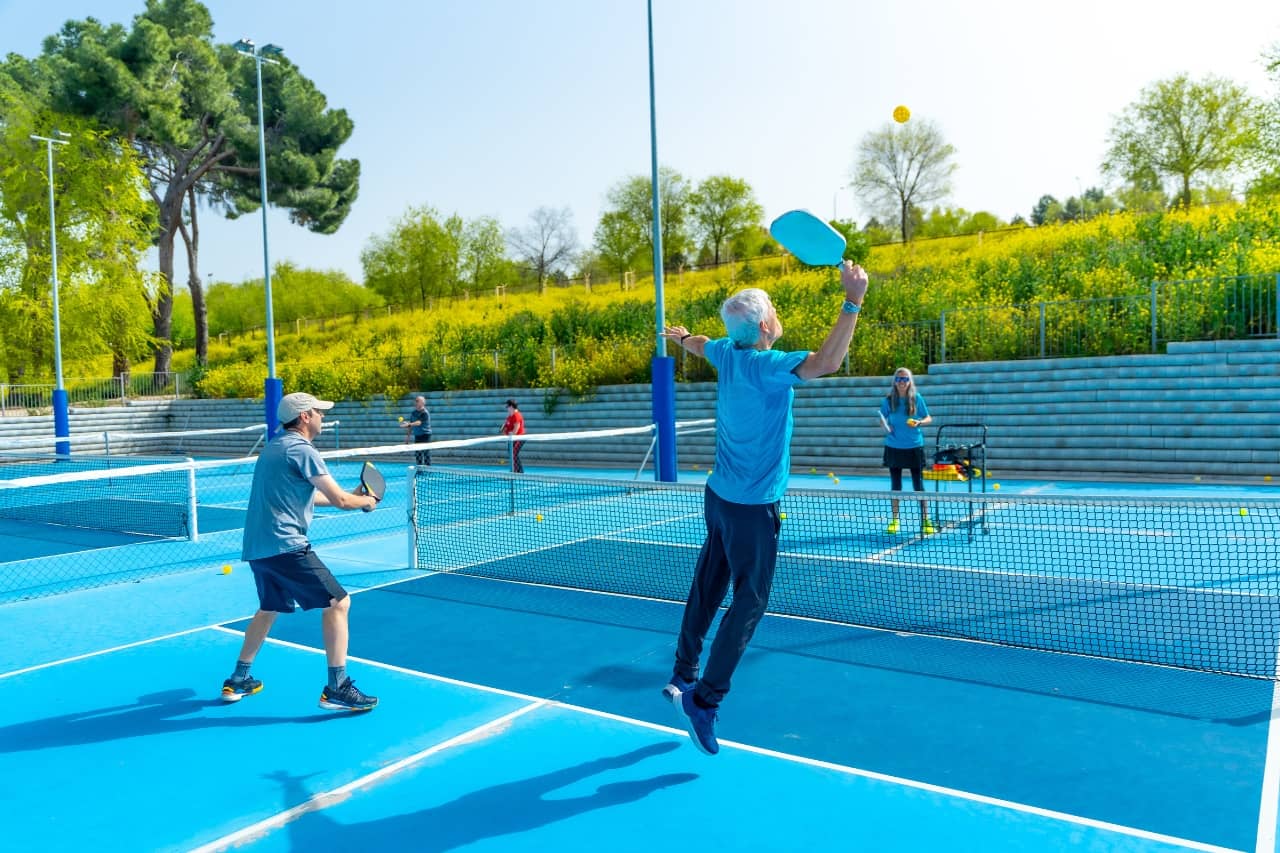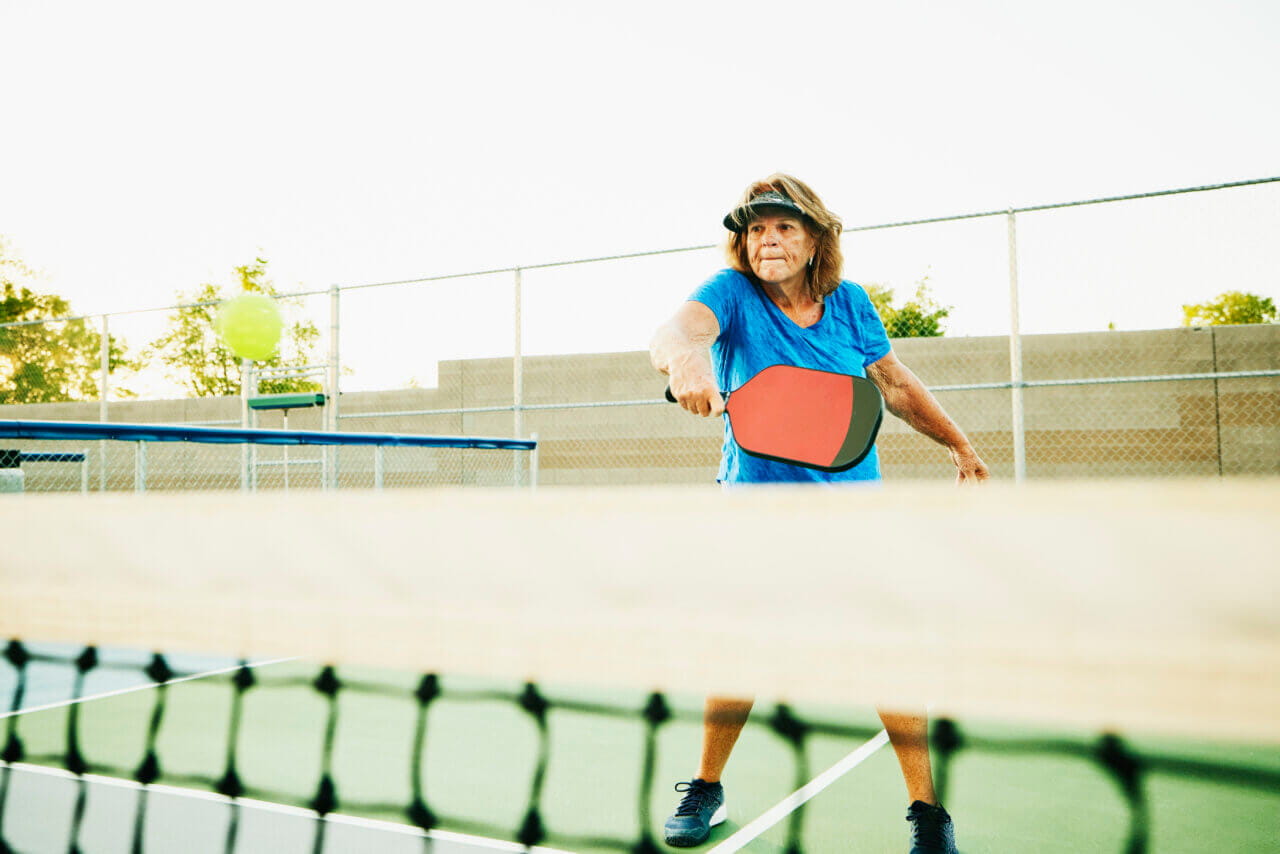Common Pickleball Injuries and Prevention Strategies

Pickleball is an excellent way to get a workout, connect with friends and have some fun. Unfortunately, as with any sport, it can also be a source of injuries.
The good news is that understanding the injury risk and taking steps to reduce it can help keep you in the game and off the sideline. This article explains common pickleball injuries and provides strategies for preventing them.
What Types of Pickleball Injuries Are Most Common?
Pickleball can cause both overuse and acute injuries. Overuse injuries are where your shoulder, knee or elbow is sore, but you can’t point to a particular event that caused the problem. The injury develops over time, and so does your awareness of it.
“Pickleball elbow” is a good example. Like tennis elbow, it’s an overuse injury where irritation and inflammation affect one of the large tendons on the outside of the elbow.
On the other hand, acute injuries are the type where you can typically identify an action or movement that caused it. Examples of common acute pickleball injuries caused by forceful movements or falls include:
- Sprained ankles
- Knee ligament and meniscus tears
- Rotator cuff damage
- Achilles tendon ruptures
- Broken bones in the hand, wrists or arms
When these and other acute injuries occur, you generally know it right away. You should stop playing and make an appointment with your healthcare provider to assess the injury.
10 Tips for Preventing Pickleball Injuries
Here are 10 actions you can take to avoid getting hurt playing pickleball:
- Talk with your healthcare provider. It’s wise to discuss your health and desire to take up pickleball before you hit the court. Your provider can determine if you’re healthy enough to play and provide recommendations for avoiding injuries.
- Get other aerobic exercise. To make the most of your court time, you should cross-train, meaning including other exercises in your overall fitness routine. Jogging, swimming, biking and other activities can increase your cardiovascular fitness and prevent fatigue when you’re playing pickleball.
- Do strength training. Strengthening your legs, core, arms and shoulders can significantly reduce your injury risk.
- Wear appropriate shoes. Your shoes should be supportive, have non-slip soles and provide good lateral (side-to-side) stability.
- Warm up before playing. Stretching and doing some light cardio before taking the court gets your muscles, tendons, heart and lungs ready for action. It’s also a good idea to stretch at the end of a pickleball session.
- Increase your activity gradually. You should ramp up the intensity and duration of your pickleball play over time, allowing your body to adjust to the sport.
- Use appropriate techniques. Consider getting lessons (formal sessions or just advice from a friend with more experience) on the proper techniques, as using them can help you avoid overuse injuries.
- Take breaks as needed. Resting and drinking plenty of fluids during a pickleball outing is critical. Getting overly tired, dehydrated or both increases your injury risk.
- Listen to your body. A little soreness after your first couple of pickleball matches is normal and probably nothing to worry about. However, soreness that gets progressively worse can be a sign you should cut back, and sharp pain might mean you should see your healthcare provider.
- Rest at least one day a week. It’s best to pick one day a week (or more) when you aren’t playing pickleball or cross-training so your body can rest, repair minor muscle damage, etc.
Don’t Let Pickleball Injuries Put You on the Bench!
By cross-training, warming up before games and paying attention to your body, you can get the most from your pickleball matches and avoid painful and frustrating injuries. If you do get hurt, your Baptist Health provider can diagnose your injury and prescribe treatment.
You can use our online directory to find a provider if you don’t have one.
Next Steps and Helpful Resources


